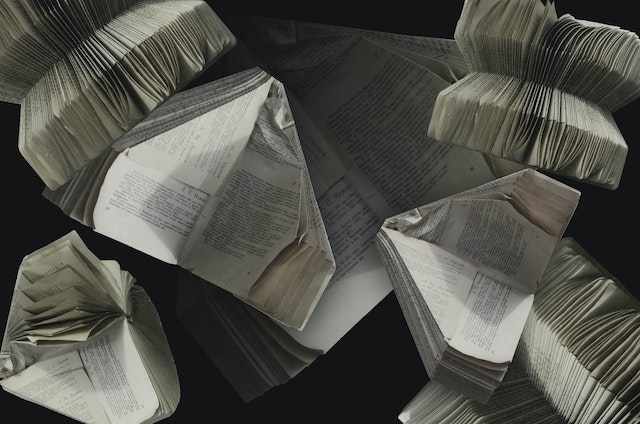Are you a business owner seeking the ideal printing solution? Choose the best printing solution for high-quality marketing materials, professional brochures, or eye-catching signs. Finding the right match for your business might be difficult with so many possibilities. You’re covered! This blog post will help you choose the best printing solution for your budget and timeline. We’ll also show you DTF printing and its advantages. Prepare to revolutionize print and grow your business!
Business printing needs?
First, assess your business printing demands. Need flyers and business cards? Banners and posters? Knowing your printing demands will help you choose. Consider print quality too. Find a printing option that excels in print quality if you want crisp, high-resolution photographs with brilliant colors.
Consider printing materials too. Is it on paper or vinyl or fabric? Determining early which printing solutions specialize in which materials might save time and work. Customization matters too. Do you want names or barcodes on each print? If needed, find a printing solution with this level of customization.
Don’t forget about additional services for your printed items. This may include design assistance or binding or laminating. These additional services ensure that your printing solution can handle all aspects of your project. By carefully analyzing these criteria connected to your business’s particular printing demands, you can choose the best printing solution for optimal outcomes!
Budget concerns?
A budget is important when picking a printing solution for your organization. Before making any decisions, you must know your financial limits and how much you’re ready to spend on printing. First, consider the cost of buying or leasing printing equipment. Based on your projected usage and future demands, decide if buying or renting is more cost-effective.
Don’t forget about continuous costs like printer cartridges, paper supplies, maintenance fees, and possible repairs. Over time, this might drastically affect your budget. Another essential consideration is whether outsourcing your printing needs is cheaper than buying pricey equipment. Professional print shops often offer low prices for small businesses with restricted printing needs.
When comparing printing solutions within your budget, consider ROI. Better marketing materials or efficiency from a better printer? Assessing these criteria can help you make an informed decision that fits your financial constraints and business goals.Remember that achieving the correct mix between quality and affordability is crucial when budgeting for your business’s printing needs. By carefully analyzing all-important cost aspects, you can find an appropriate solution without compromising quality or breaking the bank!
Your timeframe?
Timeframe matters when picking a printing solution for your organization. How fast do you need printing projects? Any pressing deadlines? These are crucial pre-decision questions. Choose a fast-turnaround printing solution if you need materials quickly. Find a source with efficient production and fast delivery without sacrificing quality.
If you have more time and don’t need results right away, you may have other possibilities. Consider production and shipping timelines when comparing printing solutions.Some printers charge extra for rush or accelerated services. This could help with last-minute print jobs or marketing strategy modifications.
Timeframe considerations can help you choose the optimal printing solution for your organization. Finding a service that meets your deadlines is essential to completing all your print tasks on time.
Selecting a printing solution
Consider these aspects when choosing a printing solution for your organization. Assess your printing demands first. Printing documents or graphics? Knowing your needs will assist you choose. Budget next. Printing options vary in price, so create a reasonable budget that fits your finances. Buying a higher-quality printer upfront may save you money on maintenance and replacement.
Timeframes matter too. Determine your printing needs and any time-sensitive jobs. Some printers have faster print rates or automatic document feeders to speed up the process. Researching manufacturers and models before buying a printer is crucial. Customer reviews and ratings might indicate reliability and performance. Consider simplicity of use, system compatibility, and support.
Dtf (direct-to-film) printing is an interesting option. Dtf prints full-color images on fabrics and metal without compromising picture quality or durability. This approach enables design flexibility, fast production, and accurate color.
What is dtf printing and what are its benefits?
The correct printing solution for your organization ensures efficiency, cost-effectiveness, and high-quality output. You may make a wise option that will benefit your business by carefully analyzing your needs, budget, and timeline.
Dtf printing is becoming popular. DTF, or “Direct to Film,” is a procedure where ink is immediately deposited to a heat transfer film before being transferred to fabric or other surfaces. This method has various advantages that may make it appropriate for your organization.
Dtf printing is vivid and detailed. This ink bonds nicely with many fabrics, producing bright prints with precise lines and detailed motifs. Dtf printing produces amazing logos on garments and promotional items. Dtf printing also lasts long. The ink is durable enough for bespoke t-shirts and sportswear. Dtf-printed objects stay brilliant even after prolonged usage because of their resilience to fading and wear.
Dtf printing is also versatile across materials. This procedure works well on cotton and synthetic materials like polyester and nylon. Since the film can be cut into any form, it offers print size and placement versatility. Dtf printing also speeds up manufacturing compared to screen printing or embroidery. Businesses can fulfill shorter deadlines while retaining quality with faster setup times and fewer design complexity or quantity limits.





